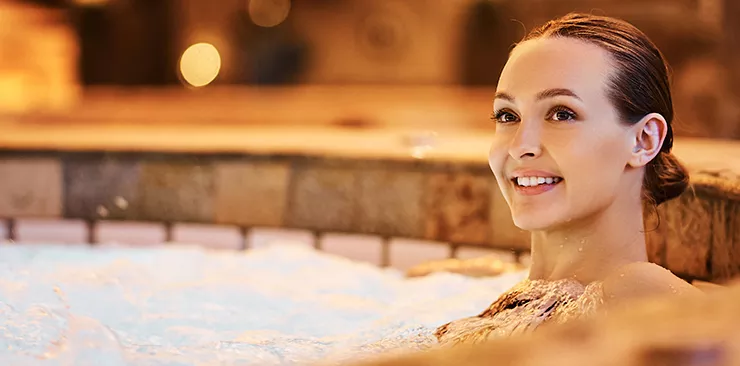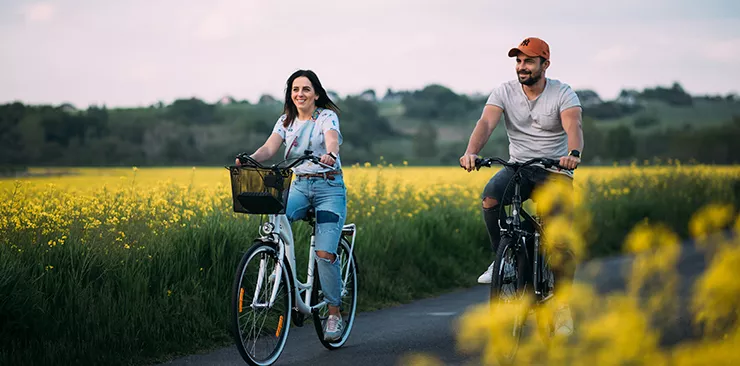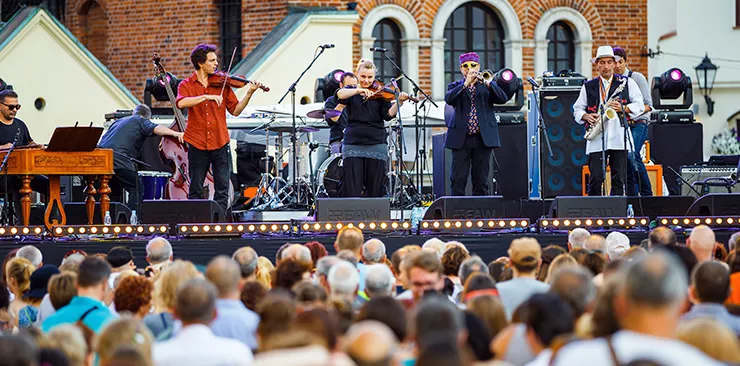




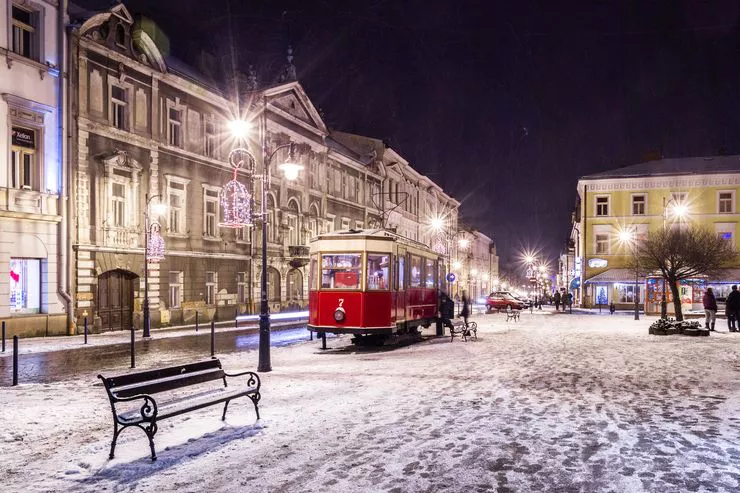
Are cafés Małopolska’s pubs?
Whatever good there has ever been in pub culture is alive in the Kraków cafés. The concept that discussing everything that matters over a cup of steaming infusion of ground coffee beans was born in the head of a Pole, even if residing in Vienna, and he was provided with beans by the King of Poland, therefore it’s only right to say that we are the ones who gave the world café culture.
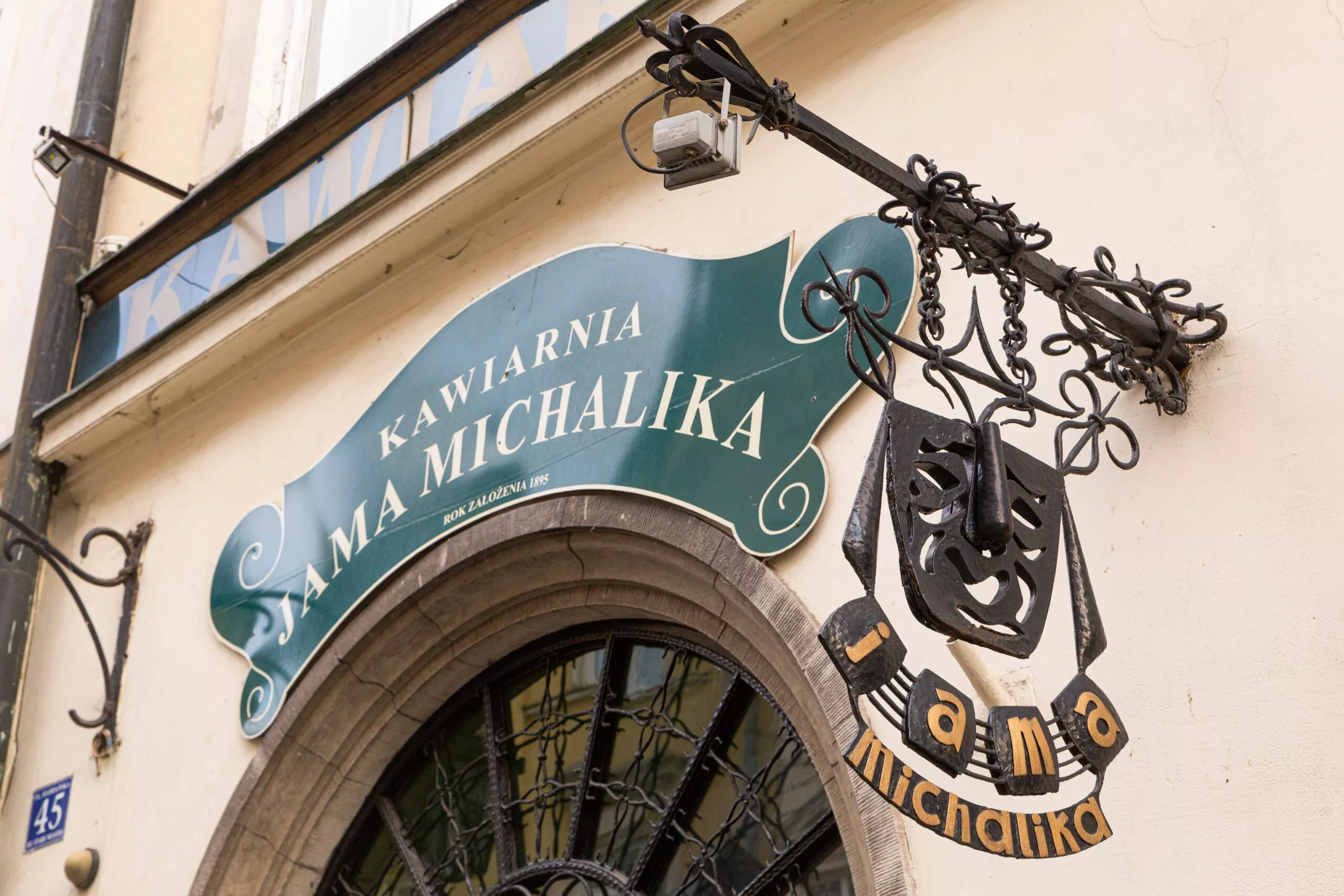
It was eagerly embraced in Kraków, even if the first “kafehauz” on record in the city only opened in the 1770s. Locals appreciated cafés with the conservative air, characteristic of Kraków. It was only in the late 19th century that the city’s bohemians realised they can “inhabit” them. Living in squalor you may perhaps remember from Moulin Rouge, they chose to meet and work in the cafés, where, at the price of just one cup, they could sit at a table for hours on end, solving the most burning political issues of the wide wide world in their heads or with their friends, and, unable to solve the problems of their own finances.
Little wonder that many of them paid the publicans… Sorry! I mean café owners, with their works. One of the first to accept such a form of payment was Jan Michalik, who ran his business famously hailed as Jama (Polish for “den “) in ul. Floriańska.
Today, Jama Michalika can still be visited for the same purposes as in its heyday, more than a century ago. You still come here to drink a leisurely tea or coffee, have a cake, and discuss the issues of utmost importance. What has, however, changed is that you now do it amongst the most beautiful works of its bygone patrons. Not even the furniture has changed, so you walk into a piece of heritage that is both tangible and intangible.
Another such gem of the café culture is in the dead centre of the city: the Cloth Hall, by the side of the minute St Adalbert’s Church. First attended by the bourgeoisie, Noworolski Café, soon also began to attract the city’s artists. Visit it to admire the greatest panorama of the Main Market Square, with St Mary’s Church visible under the vaults of the Cloth Hall. Absolute quintessence of Kraków!
Kraków is obviously not the only city graced by magnificent cafés and enjoying café culture. In Tarnów, be sure to turn your steps to Kawiarnia Tatrzańska and don’t forget to board, even for a moment, the famous tram-turned-café, aptly and properly called Café Tramwaj.
As the Tatras were mentioned, be sure that Zakopane boasts many great cafés, the two perhaps best known – the STRH Bistro Art Café and Kawiarnia Europejska – are right in Krupówki.
However, the greatest “café den” in the Polish mountains is Szczawnica. As the place is small, your choice is not limitless, even if very wide: from the Café Helenka and Eglander Caffè (no, that’s not a typo) reminiscent of 19th-century mountain resorts to ooh lala! książkokawiarnia, where you’re welcome to read books (after all książka is Polish for “book”) or borrow board games, tiddlywinks or pick-up sticks. Like in a proper British pub, innit?
Just don’t let the Austrians fool you that cafés are their idea, didn’t they persuade the world that Beethoven was Austrian, while Hitler was German? Yes, the first café (at Domgasse 6) did open in Vienna in 1684, but as an enterprise invented and ran by a Pole, Jerzy Franciszek Kulczycki, who perhaps owed the concept and certainly the coffee to John III Sobieski King of Poland, who found it among the spoils of Grand Vizir Kara Mustafa. Ask your guide for details, while admiring the little painting of Kulczycki in the Czartoryski Museum.
The custom of “moving” to cafés has survived, and is practiced and enjoyed by students and professionals alike. Perhaps this is why many cafés now double as bookshops, to mention Kraków’s De Revolutionibus in Podgórze, Lokator and Cheder in Kazimierz, and Cafe NOWA Księgarnia in Nowa Huta.

